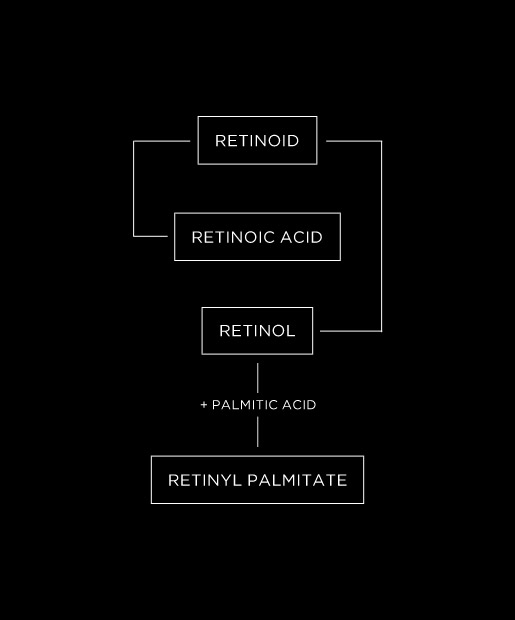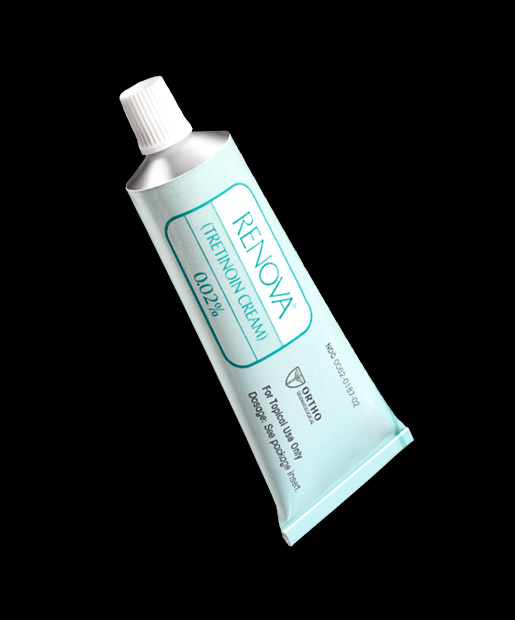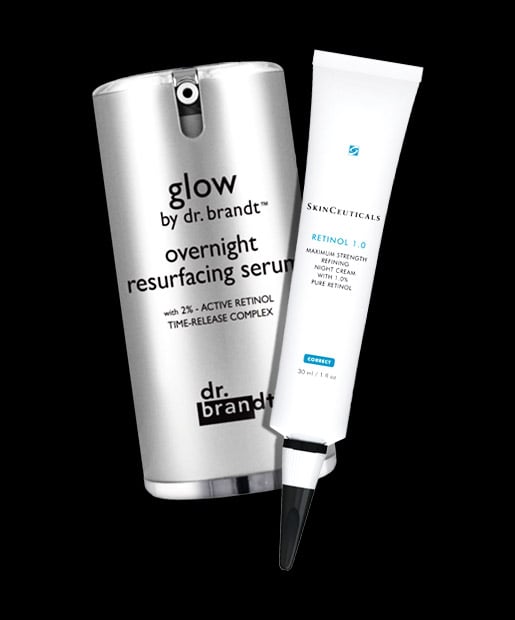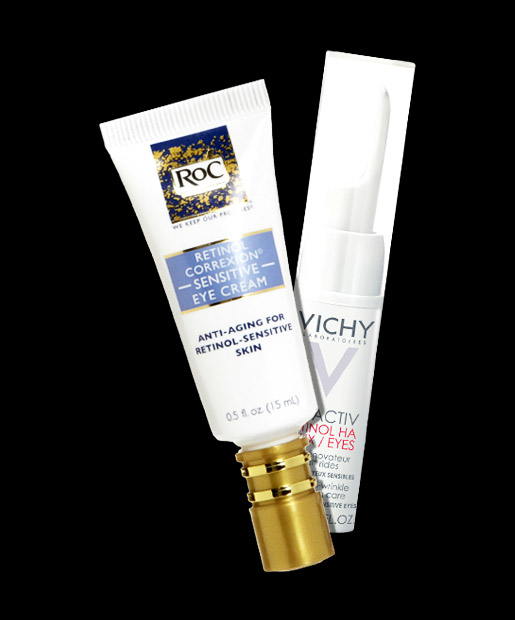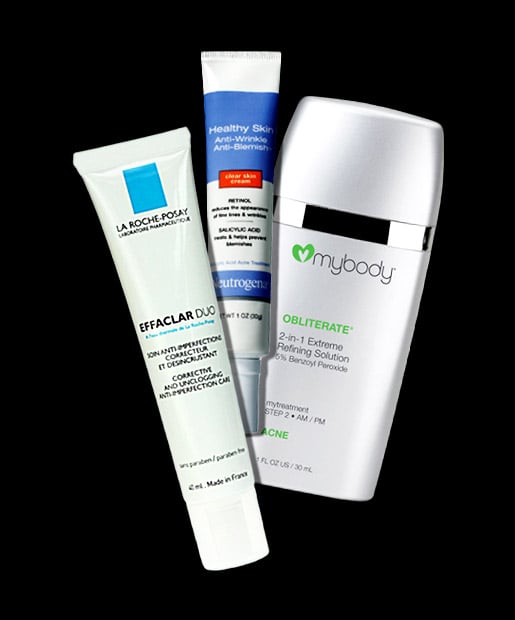The language is tricky: retinols, retinoids, retinoic acid. What's the difference? While the endgame is the same (better skin) and they're all derived from vitamin A, not all retin-something ingredients are created equal. The delivery mechanism and how they react with your skin varies. Here are the basics:
Retinoid: The blanket term for all vitamin A derivatives in skin care.
Retinoic acid: The ingredient you'll find in prescription retinoids.
Retinol: The over-the-counter version. Your skin converts retinol to retinoic acid.
Retinyl palmitate: A combination of retinol and palmitic acid. It's the gentlest ingredient in the retinoid family.
Retinoid: The blanket term for all vitamin A derivatives in skin care.
Retinoic acid: The ingredient you'll find in prescription retinoids.
Retinol: The over-the-counter version. Your skin converts retinol to retinoic acid.
Retinyl palmitate: A combination of retinol and palmitic acid. It's the gentlest ingredient in the retinoid family.
Retin-A, Renova, Differin and Tazorac are some of the most popular brand name, prescription-strength vitamin A creams on the market. If you go to your dermatologist asking for an at-home wrinkle treatment, 99-percent of the time he or she will suggest one of them. And they all basically work the same way: they bind to receptors on cells, speeding up cell turnover. (While it naturally takes 30 days for skin cells to shed, with a retinoid that time is cut to 20 days — meaning the top layer of your skin is literally younger.) Retinoids also minimize inflammation, keep your genes from mutating (read: skin cancer prevention — yes, really) and stimulate collagen production.
They differ slightly in formulation, and some are better for older (instead of younger) or drier (instead of oilier) skin types. "With different brands, you get a different vehicle," says New York dermatologist Janet Prytowsky, M.D. "With Renova, for example, it's a nice vehicle. It's moisturizing to help combat some of the dryness, and there's enhanced absorption into the skin." Think of it like drinking Gatorade instead of water when you're dehydrated — it absorbs faster, and you'll feel better (see results) sooner.
What about generic? "You'll still get the chemical at the same concentration, but it may not be absorbed as well," says Prytowsky. "You may get less effect." In this case, brand names may be worth the investment.
They differ slightly in formulation, and some are better for older (instead of younger) or drier (instead of oilier) skin types. "With different brands, you get a different vehicle," says New York dermatologist Janet Prytowsky, M.D. "With Renova, for example, it's a nice vehicle. It's moisturizing to help combat some of the dryness, and there's enhanced absorption into the skin." Think of it like drinking Gatorade instead of water when you're dehydrated — it absorbs faster, and you'll feel better (see results) sooner.
What about generic? "You'll still get the chemical at the same concentration, but it may not be absorbed as well," says Prytowsky. "You may get less effect." In this case, brand names may be worth the investment.
While prescription-strength retinoids may work better and faster than over-the-counter retinols, there are some downsides: cost, inconvenience and side effects like peeling skin. Fortunately, OTC versions do work — they're just slower, but they're also milder. Your skin cells absorb the retinol and convert it to retinoic acid, but they only take in the amount they can use — this keeps the cells from getting overwhelmed (which results in irritation).
If you want maximum benefits, concentration is key. "Always look for one percent or higher," says Prytowsky. "If you go lower, you won't see much of a result." Try Skinceuticals Retinol 1.0, $50, and Glow by Dr. Brandt Overnight Resurfacing Serum, $85, with 2-percent time-released retinol. If an OTC retinol is drying out your skin, Prytowsky suggests using it every other day or every third day until you get used to it. And, of course, moisturize, moisturize, moisturize.
If you want maximum benefits, concentration is key. "Always look for one percent or higher," says Prytowsky. "If you go lower, you won't see much of a result." Try Skinceuticals Retinol 1.0, $50, and Glow by Dr. Brandt Overnight Resurfacing Serum, $85, with 2-percent time-released retinol. If an OTC retinol is drying out your skin, Prytowsky suggests using it every other day or every third day until you get used to it. And, of course, moisturize, moisturize, moisturize.
If your skin is extremely sensitive (or — like me — you're scared of the flaky, red skin that goes hand in hand with retinoic acid), start with the gentlest form of retinol: retinyl palmitate. "You'll see less improvement in terms of fine lines, wrinkles, collagen production and blotchiness, but that doesn't mean it's insignificant," says Prytowsky.
Retinol derivatives can be applied all over (try Olay Regenerist Advanced Anti-Aging Intensive Repair Treatment, $25.99), but they are especially useful for the fragile skin around the eyes, and many brands have formulated eye creams containing them. Try RoC Retinol Correxion Sensitive Eye Cream, $22.99, or Vichy LiftActiv Retinol HA Eyes, $42.50.
Retinol derivatives can be applied all over (try Olay Regenerist Advanced Anti-Aging Intensive Repair Treatment, $25.99), but they are especially useful for the fragile skin around the eyes, and many brands have formulated eye creams containing them. Try RoC Retinol Correxion Sensitive Eye Cream, $22.99, or Vichy LiftActiv Retinol HA Eyes, $42.50.
Retinoids aren't only wrinkle fighters — they also treat acne. In fact, when the ingredient was first approved by the FDA in 1971, it was intended for acne patients. But like bell bottoms and disco, these original creams are now passé.
In lieu of prescription-strength retinoids, many dermatologists take a multi-faceted approach to treating breakouts. They recommend products that combine retinol with anti-acne ingredients like salicylic acid. "The combination is great because the retinol will start to loosen the skin cells that line the follicles," says Prystowsky. "The oil that's accumulating inside the pores can push to the surface." Meanwhile, benzoyl peroxide kills bacteria and salicylic acid exfoliates the top layer of skin. Basically, you're breaking the breakout cycle in two places.
Fair warning: don't play chemist and mix two products containing these ingredients yourself unless your doctor gives you the green light. Instead, look for one product that contains two ingredients — they've been formulated to work together. We like Neutrogena Healthy Skin Anti-Wrinkle Anti-Blemish Cream, $13.99, and LaRoche Posay Effaclar K Clarifying Moisturizer, $30.99 — both have a blend of a retinol derivative and salicylic acid — and MyBody Obliterate 2-in1 Extreme Refining Solution, $90, with benzoyl peroxide and a retinol complex.
In lieu of prescription-strength retinoids, many dermatologists take a multi-faceted approach to treating breakouts. They recommend products that combine retinol with anti-acne ingredients like salicylic acid. "The combination is great because the retinol will start to loosen the skin cells that line the follicles," says Prystowsky. "The oil that's accumulating inside the pores can push to the surface." Meanwhile, benzoyl peroxide kills bacteria and salicylic acid exfoliates the top layer of skin. Basically, you're breaking the breakout cycle in two places.
Fair warning: don't play chemist and mix two products containing these ingredients yourself unless your doctor gives you the green light. Instead, look for one product that contains two ingredients — they've been formulated to work together. We like Neutrogena Healthy Skin Anti-Wrinkle Anti-Blemish Cream, $13.99, and LaRoche Posay Effaclar K Clarifying Moisturizer, $30.99 — both have a blend of a retinol derivative and salicylic acid — and MyBody Obliterate 2-in1 Extreme Refining Solution, $90, with benzoyl peroxide and a retinol complex.


